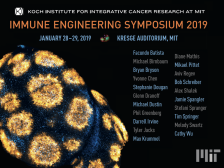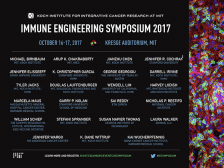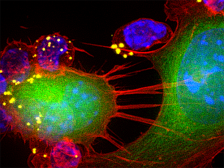
This imaging experiment allows researchers to "see" the amount of antigen (red indicates more, blue less) that gets into each lymph node, organs where immune cells learn how to respond to threats. Such visuals help researchers identify the most effective vaccination approaches, and could aid the design of new technologies for diseases like HIV and cancer, which do not yet have working vaccines. Credit: Jacob T. Martin, Ben Cossette, Darrell J. Irvine (2020 Image Awards Winner)
Biological, chemical, and materials engineers are engaged at the forefront of immunology research. At their disposal is an analytical toolkit honed to solve problems in the petrochemical and materials industries as well as powerful synthetic capabilities, such as engineering proteins for specificity and affinity and designing multifunctional nanoparticles and gels to interact in specific ways with cells and tissues.
Our Immune Engineering Symposium, held every 18-24 months, brings together leading researchers and clinicians to explore the tools and trends of immune engineering and immunotherapy. Scientific talks offer insight into emerging data from academia, industry, and clinical practice, driving the continued pursuit of knowledge and solutions across disciplinary boundaries.


